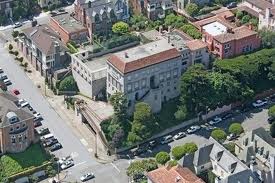London, Jul 30: Want to rub shoulders with billionaires and live life king-size?
A Saudi Prince is reportedly selling his palatial house which is located close to where Prince William and wife Kate Middleton, Indian steel magnate Lakshmi Mittal and the Sultan of Brunei stay.
The house is priced at 100 million pounds and if the deal goes ahead it will be one of the most expensive houses ever sold in the UK, but would-be buyers have been sworn to secrecy.
Prince Abdul Aziz bin Fahd, the favourite son of the late King Fahd who led Saudi Arabia for 23 years, is understood to be trying to sell 5 Palace Green in Kensington, The Times reported.
Knight Frank, the estate agent to the rich, is believed to have approached a number of potential buyers who have signed confidentiality agreements.
The house is located at the southern end of Kensington Palace Gardens, which is Britain's most expensive street and often referred to as "Billionaires' Row".
The guarded street is home to embassies and some of the world's richest tycoons including the Sultan of Brunei, the Ukrainian-born American businessman Len Blavatnik, the steel magnate Lakshmi Mittal and his family, and Jon Hunt, the founder of Foxtons estate agent.
Houses in Kensington Palace Gardens, prized for its exclusivity and security and its large mansions and gardens, can be more than 6,000 pounds a sq ft in value.
The owners of the 29 homes along Billionaires' Row also live yards from Kensington Palace. Such has been the demand in recent years for homes on this small stretch of southwest London that the total value of the homes there has soared to more than 3.5 billion pounds— higher in value than all the 2,600 homes in Chipping Norton, David Cameron's constituency home in Oxfordshire.
Prince Abdul Aziz bin Fadh's 5 Palace Green is a detached, listed building designed in 1905 by the architect Edward Prioleau Warren.
The three-storey red brick building has Portland stone dressings and a central entrance beneath a gabled façade, large gate piers and iron railings. The interior is understood to have marble staircases with wrought-iron balustrades.





Comments
Add new comment